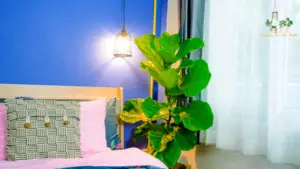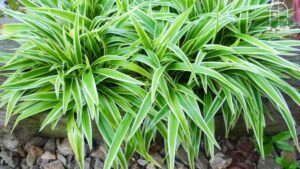This article covers the following areas –
- Choosing the Right Plants
- Designing the Plant Divider
- Constructing the Plant Room Divider
- Care and Maintenance
- In Conclusion
Living in an era where urban spaces are becoming increasingly constricted, there is a compelling need to find ingenious ways of dividing rooms for functionality and privacy. One inventive and eco-friendly method of achieving this is by using indoor plants as room dividers.
This method adds a lively aesthetic to your spaces, improves air quality, and creates a relaxing atmosphere. In this guide, I’ll explain how to create effective, attractive room dividers using indoor plants.
Creating room dividers with indoor plants involves selecting appropriate plant species, arranging them in suitable containers, and using structures like shelves, ladders, or trellises for support. Care includes regular watering, fertilizing, and pruning.
For a more in-depth understanding of this process, read on. This comprehensive guide will take you through the steps involved in creating a plant room divider, from plant selection to construction and maintenance. It provides detailed information and practical tips, ensuring you can successfully create and care for your own indoor plant divider.

Choosing the Right Plants
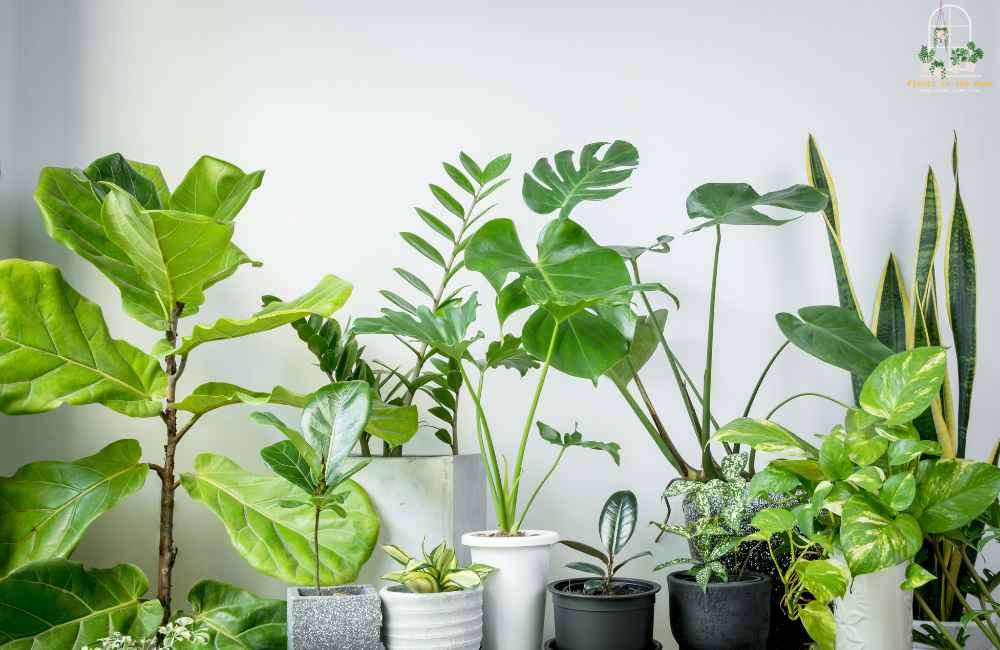
Integrating indoor plants as room dividers necessitates some thought and planning. Not all plants are suitable for this purpose. A plant’s size, light requirements, and maintenance needs play a critical role in determining its viability as a room divider. The following sections provide an in-depth analysis of each factor, assisting you in making an informed decision and ensuring your indoor green space thrives.
Size and Growth Pattern
A plant’s size and growth pattern are crucial considerations when using them as room dividers. The goal is to create a sense of separation and privacy, and to achieve this, you need plants that are both tall and dense.
Tall Plants
A tall plant can effectively create a visual barrier, thus enhancing the sense of privacy in a room. For instance, Ficus trees, Dracaena, and Kentia palms are excellent choices because of their significant height and lush growth patterns.
- Ficus Trees: Known for their height and dense foliage, ficus trees can reach up to 6-8 feet indoors. They offer a lush, tropical aesthetic.
- Dracaena: With their tree-like structure and heights that can reach 6 feet indoors, Dracaena plants provide a vibrant, green wall-like effect.
- Kentia Palms: Native to Australia, these palms can grow up to 10 feet tall indoors and offer a beautiful tropical look.
Fast-Growing Plants
You might also want to consider fast-growing plants for their ability to establish the desired division rapidly. With their quick-growing vines, plants like Golden Pothos can quickly spread across a trellis, giving you a lush and efficient room divider in no time.
Light Requirements
Understanding a plant’s light requirements is critical when selecting the perfect species for your room divider. Each plant has specific light requirements, and failure to meet them can lead to poor growth or even plant death. Hence, it’s crucial to match the plant to the light conditions of your chosen area.
Plants for Low-Light Areas
If your room doesn’t receive a lot of natural light, don’t worry. Several species can thrive in low-light conditions. The Snake, ZZ, and Cast Iron plants are excellent choices for less illuminated spaces.
- Snake Plant: Also known as Mother-in-Law’s Tongue, this plant can survive in low light and irregular watering, making it a durable choice for your room divider.
- ZZ Plant: Known for its shiny, dark green leaves, the ZZ plant can survive with minimal light and care.
- Cast Iron Plant: Living up to its name, the Cast Iron plant is tough and can survive in low light and extreme temperatures.
Plants for Well-Lit Areas
If your room is well-lit, plenty of plant options will flourish in the abundance of light. Succulents, Croton plants, or Umbrella plants are excellent choices.
- Succulents: A group of plants known for retaining water and enduring sunny conditions. They come in various shapes and colors, offering a range of aesthetic choices.
- Croton Plant: Known for their colorful foliage, Croton plants need plenty of light to maintain their vibrant colors.
- Umbrella Plant: This plant loves bright, indirect light and can grow tall, making it an excellent choice for room dividers.
Maintenance
Plant room dividers aren’t just about selecting and placing plants. They also require care and maintenance to continue serving their purpose and enhancing your space’s beauty. The amount of care a plant needs can be a determining factor when choosing your plants, especially if you have a busy schedule.
Low-Maintenance Plants
If you’re a person with a busy lifestyle, low-maintenance plants can be your best bet. Plants like the ZZ plant, Snake plant, or Spider plant don’t require constant watering or care, which makes them perfect choices.
- ZZ Plant: Known as the “eternity plant,” the ZZ plant is drought-tolerant and can survive with little to no light.
- Snake Plant: This plant can tolerate neglect. It does not require frequent watering and can survive in various light conditions.
- Spider Plant: Known for its air-purifying qualities, the Spider plant requires minimal care. It can thrive in various conditions and is also non-toxic, making it safe for households with pets.
High-Maintenance Plants
If you have a green thumb and enjoy the process of caring for your plants, you can opt for plants that require more attention. These can include the Boston Fern or Croton, which need specific watering, light, and humidity conditions to thrive.
Choosing the right plants for your room divider requires considering the plant’s size, light requirements, and care. By considering these factors, you can create a lively, beautiful, and functional space divider that complements your living space.
Designing the Plant Divider
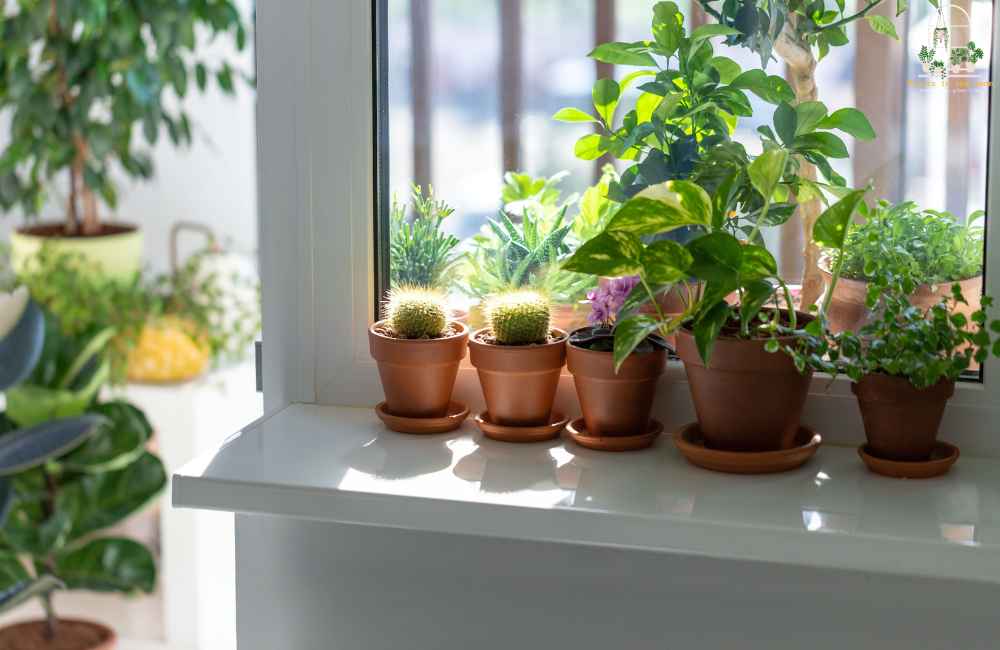
Once you have chosen the right plants for your room divider, the next step involves designing the divider itself. This process entails two primary aspects: selecting suitable containers and arranging your plants effectively. In the design stage, you can get creative and put your personal touch on the plant divider.
It’s a balance between functionality and aesthetics, with the aim to create an eye-catching, yet practical, room divider. This section delves into the critical elements of designing a plant room divider, from choosing the right containers to positioning your plants strategically.
Choosing the Right Containers
The containers you choose to house your plants will not only serve as their home but also contribute significantly to the overall aesthetic of your room divider. Several factors can influence the choice of containers, including their size, shape, and material. This section provides a detailed guide to help you make the best choice for your plants and your space.
Size and Shape
The size and shape of the container should align with the plant’s growth habits and your aesthetic preference.
- Tall, slender containers can lend an elegant look to your room divider. They are ideal for tall plants, like the Ficus or Dracaena, that can grow vertically and take advantage of the height.
- Wide pots: Wide pots may offer more stability and are perfect for bushier plants or those with spreading growth habits. They can also accommodate multiple small plants, allowing for a mix-and-match effect.
Material
The material of the container can influence not just the look of your room divider, but also the well-being of your plants.
- Ceramic pots: Offering a classic look, ceramic pots are versatile and can suit various interiors. They are also porous, which can be beneficial for plants as it allows the roots to breathe.
- Metal or plastic containers: These align more with modern or industrial-style interiors. Plastic pots are lightweight and easy to move around but may not offer the same breathability as ceramic or clay pots.
- Self-Watering pots: If you have plants that require consistent moisture levels, self-watering pots can be a smart choice. They come with a reservoir that keeps the soil adequately watered, reducing manual watering frequency.
Arranging Your Plants
After selecting the right containers, the next step is arranging your plants. It involves thoughtful placement to create a functional and visually pleasing barrier. Here’s an in-depth look at how to arrange your plants to make the most of your space and your plants’ features.
Creating a Tiered Effect
Creating a tiered effect can make your room divider more appealing and dynamic. To achieve this, place the taller plants in the back or center, and the shorter ones in front. This arrangement creates a sense of depth and allows each plant to be seen and appreciated.
For example, you can place a tall Dracaena in a tall container at the center, surround it with medium-height plants like Monstera or Umbrella plant, and then place smaller plants like Pothos or Spider plant at the front.
Grouping Plants by Needs
When arranging your plants, it’s important to group them according to their light and water requirements. This way, you can ensure that all plants receive the care they need without any plant being overwatered or exposed to inappropriate light levels.
For instance, you can group Snake, ZZ, and Cast Iron plants together, as they all tolerate low-light conditions. On the other hand, succulents and Croton plants, which prefer plenty of sunlight, can be grouped together.
Considering Room Flow
Lastly, consider how people move through the room when designing your plant room divider. Position the divider in a way that it doesn’t obstruct the pathway but still serves its purpose of dividing the space.
In conclusion, designing a plant room divider requires thoughtful selection of containers and strategic arrangement of your plants. This process allows you to blend your style and preferences with the plants’ needs to create a unique, functional, and appealing space divider.
Constructing the Plant Room Divider
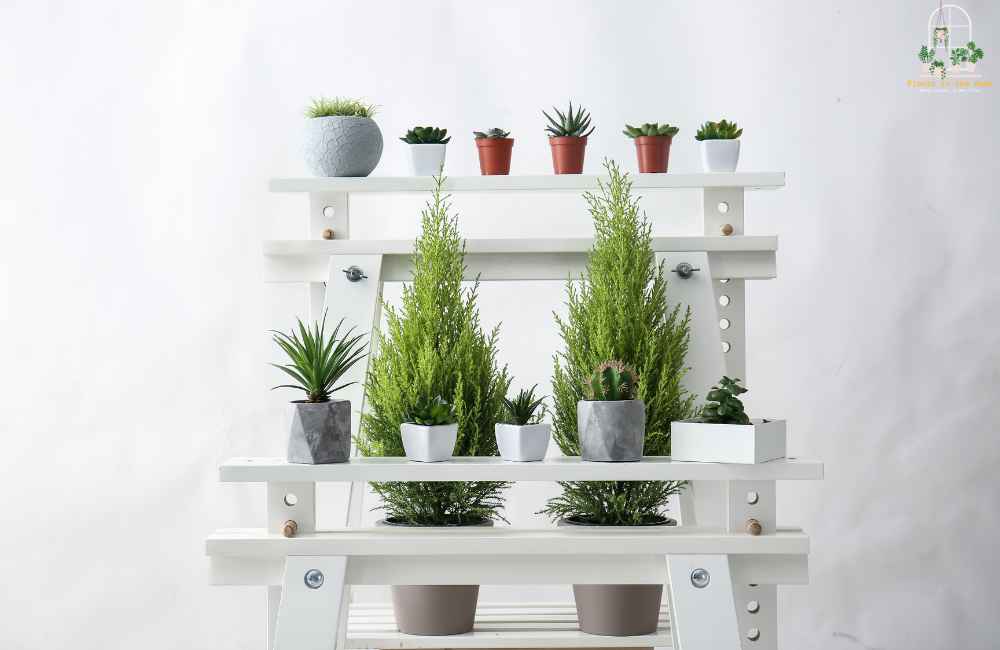
The process of constructing your plant room divider is where your plan comes to life. It’s a step that involves a great deal of creativity and flexibility, as it largely depends on your space, the number of plants you have, and the type of look you want to achieve.
Common methods of constructing plant room dividers include using structures like shelves or ladders, trellises, or hanging setups. Each of these methods offers a unique aesthetic and can be tailored to suit your particular needs and style. The following sections break down each of these construction methods, providing detailed information to help you implement them effectively.
Building a Shelf or Ladder
A ladder or shelf structure is an effective and versatile method for creating your plant room divider. It provides a multi-level platform on which you can display an array of potted plants, creating a vibrant and dynamic visual barrier.
Ladder-Style Dividers
Ladder-style dividers are ideal if you prefer a vertical setup. Each step of the ladder serves as a shelf for your plants. The open design of a ladder allows light to reach each plant while providing ample space for growth. You can either use an existing ladder or construct a custom one to fit your space and desired look.
Shelf Dividers
On the other hand, shelf dividers offer more surface area to accommodate a larger number of plants. You can opt for floating shelves for a sleek, modern look, or a freestanding shelf for more stability and flexibility. The key is to ensure that the shelves are sturdy enough to support the weight of your plants.
Using a Trellis
A trellis can serve as the backbone of your plant divider, particularly if you are using climbing or vine plants. Trellises can be made of various materials such as wood, metal, or plastic, and their design can range from simple grids to intricate latticework.
Selecting the Right Plants
Choose plants that can climb or weave through the structure when using a trellis. Ivy, Philodendrons, or Pothos are excellent choices, as they can grip onto the trellis and fill it out with their dense growth.
Installing Your Trellis
Installing a trellis involves securing it to a sturdy base or mounting it on a wall. It’s crucial to ensure that the trellis is stable and robust enough to support the weight of the plants as they grow.
Hanging Plant Dividers
Creating a room divider with hanging plants is another option that can lend a whimsical and airy vibe to your space. This method involves suspending pots or containers from the ceiling at varying heights to create a living curtain.
Selecting Suitable Plants
When choosing plants for a hanging divider, consider species that naturally spill over their pots. These can include trailing plants like String of Pearls, Spider Plant, or English Ivy.
Installing Your Hanging Divider
Installing a hanging plant divider involves affixing sturdy hooks to your ceiling and using ropes, chains, or macramé hangers to suspend your plants. It’s vital to ensure the hooks are secured properly, as they’ll need to support the weight of your plants.
Constructing your plant room divider offers a chance to bring your creativity to life, whether you opt for a shelf or ladder structure, a trellis, or a hanging arrangement. Regardless of the method you choose, the result will be a beautiful, living partition that enhances your space and showcases your love for plants.
Care and Maintenance

Creating a plant room divider is an exciting and fulfilling project, but it’s essential to remember that these dividers, much like any indoor plant arrangement, require consistent care and maintenance. This upkeep ensures that your plants remain healthy and continue to serve their purpose as an attractive and functional divider.
The care and maintenance process typically involves watering and fertilizing your plants and regular pruning and trimming. In this section, I’ll talk about the various aspects of care and maintenance in detail, providing practical tips and guidelines to help you keep your plant room divider thriving.
Watering
As a rule of thumb, it’s better to under-water than overwater your plants. Overwatering can lead to root rot, a common plant disease. Generally, plants prefer their soil to dry out a bit between watering. However, certain plants like Ferns or Peace Lilies prefer consistently moist soil.
You can use a moisture meter to help determine when it’s time to water your plants. If a meter is not available, stick your finger about an inch into the soil. If it feels dry, it’s time to water.
Fertilizing
Fertilizing provides your plants with essential nutrients that they might not get in sufficient quantities from the potting soil. It’s especially important if you have fast-growing or flowering plants, as these tend to use up nutrients quickly.
Most indoor plants benefit from a balanced liquid fertilizer, but ensure to follow the instructions on the packaging to avoid over-fertilization. Typically, fertilizing once a month during the growing season (spring and summer) and reducing it in the dormant season (fall and winter) is a good routine.
Pruning
Pruning involves removing dead or yellowing leaves and stems to allow your plant to direct its energy towards new growth. This process also helps maintain the health of your plant, as dead or dying parts can attract pests or disease. Always use a sharp, clean pair of pruning shears or scissors to make clean cuts and prevent damage to the plant.
Trimming
Trimming is more about controlling the size and shape of your plants. If your plants are becoming too tall or wide for your setup, you can trim them back. Remember, however, to never remove more than one-third of the plant at a time, as this can stress the plant.
The care and maintenance of your plant room divider, though requiring consistent attention, can be a rewarding process. It not only keeps your plants healthy but also enhances the aesthetic appeal of your room divider, creating a vibrant, living partition that is sure to impress.
In Conclusion
Creating a room divider with indoor plants offers an opportunity to transform your living space into a green oasis. It allows you to experiment with different plant varieties and designs, resulting in a unique and dynamic partition that improves your room’s aesthetics while providing privacy.
While it does require regular maintenance, the reward is a thriving, living display that enhances your connection with nature and makes your space more inviting. With this guide, you have the tools to embark on this creative and rewarding endeavor, cultivating both your indoor garden and your green thumb.




